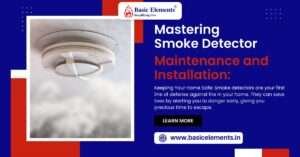Understanding the importance of fire safety in hospitals settings is key to keeping everyone safe. Hospitals and healthcare facilities have specific protocols in place to prevent fires and respond effectively during emergencies. It’s crucial to train healthcare staff on fire safety procedures to reduce risks and protect lives. Ensuring hospital staff are knowledgeable about fire safety rules helps create a safe environment for all in healthcare settings.
Developing Evacuation Strategies Fire Safety in Hospitals
Designing patient-centered evacuation strategies is crucial for ensuring fire safety in healthcare settings. It’s important to consider various mobility and health conditions patients may have when creating evacuation plans. Customizing strategies to fit individuals’ unique needs is key to ensuring everyone’s safety during emergencies. This section delves into how hospitals can carefully design and implement evacuation procedures tailored for patients with limited mobility, equipment dependencies, or cognitive impairments. By considering these factors and offering clear guidelines, healthcare facilities can improve their readiness for a quick and safe evacuation in case of a fire.
Regular Fire Drills and Simulation Exercises
To effectively prepare for emergency situations, regular fire drills and simulation exercises are essential. This section would examine the benefits of simulations that closely mimic real-life fire scenarios, thus enabling staff to practice and refine their roles in a controlled, but realistic environment. We would discuss how frequent and well-structured drills can help ingrain best practices, ensure a calm and efficient response from the team, and ultimately lead to improved safety outcomes in the face of actual fire emergencies.
Key Elements for Training Fire Safety in Hospitals Staff
Training programs for Fire Safety in Hospitals staff on fire safety should cover important aspects like:
- Fire Safety Guidelines: Easy-to-understand details on fire safety rules in healthcare facilities, covering evacuation procedures and emergency responses.
- Risk Evaluation: Teaching how to spot fire risks in healthcare settings through risk assessments.
- Fire Prevention Tips: Sharing practical fire prevention methods that can be used in the facility to lower the chances of fires.
- Hands-on Training for handling fire emergencies, including using fire extinguishers, evacuating patients safely, and communicating with colleagues.
- Practice Drills and Simulations: Regular exercises and simulations are vital for ensuring staff readiness and confidence in real emergencies. By including these elements in training, healthcare staff can enhance fire prevention, patient and staff safety, and emergency responses.
The Role of Simulation Exercises and Drills in Ensuring Preparedness for Fire Emergencies
Simulation exercises and drills play a crucial role in getting healthcare staff ready for fire emergencies. Doing fire drills regularly ensures that the staff is well-prepared and familiar with emergency procedures. These drills simulate real-life scenarios, allowing staff to practice evacuations, hospital protocols, and firefighting techniques. They enhance skills and boost confidence in dealing with emergencies. Including these drills in training is essential for quick and effective responses, enhancing preparedness, safety measures, and minimizing risks.
Compliance and Regulatory Requirements:
Making Sure Hospital Fire Safety in Hospitals Programs Measure Up to Standards and Certifications
It’s super important for hospital fire safety training programs to follow the rules to keep patients, staff, and visitors safe.
Sticking to standards and certifications is crucial to prevent fires and respond effectively to emergencies. Hospitals need to stick to the compliance guidelines from organizations like the Joint Commission, OSHA, NFPA, CMS, and state health departments.
These guidelines include protocols, training requirements, drills, equipment maintenance, and evacuation plans that hospitals should have. Hospitals can earn accreditation for their fire safety programs from organizations like The Joint Commission’s Environment of Care standards or NFPA 101: Life Safety Code certification, showing their commitment to top-notch practices in the industry.
By meeting these guidelines and getting certified, healthcare facilities can enhance their preparedness for fires and emergencies, ensuring the safety of everyone in the facility.
Conclusion:
Empowering healthcare staff with the knowledge and skills to keep patients and premises safe from fire hazards is key to ensuring everyone’s well-being. By training them on fire prevention, detection, and response, staff can reduce risks and act quickly during emergencies. This proactive approach not only protects patients but also maintains a secure environment. Continuous education and reinforcement of safety procedures help foster a culture of preparedness, making healthcare facilities safe for all We at Basic Elements are at the forefront of management solutions in Fire Safety in Hospitals.
For More Information visit : Instagram






